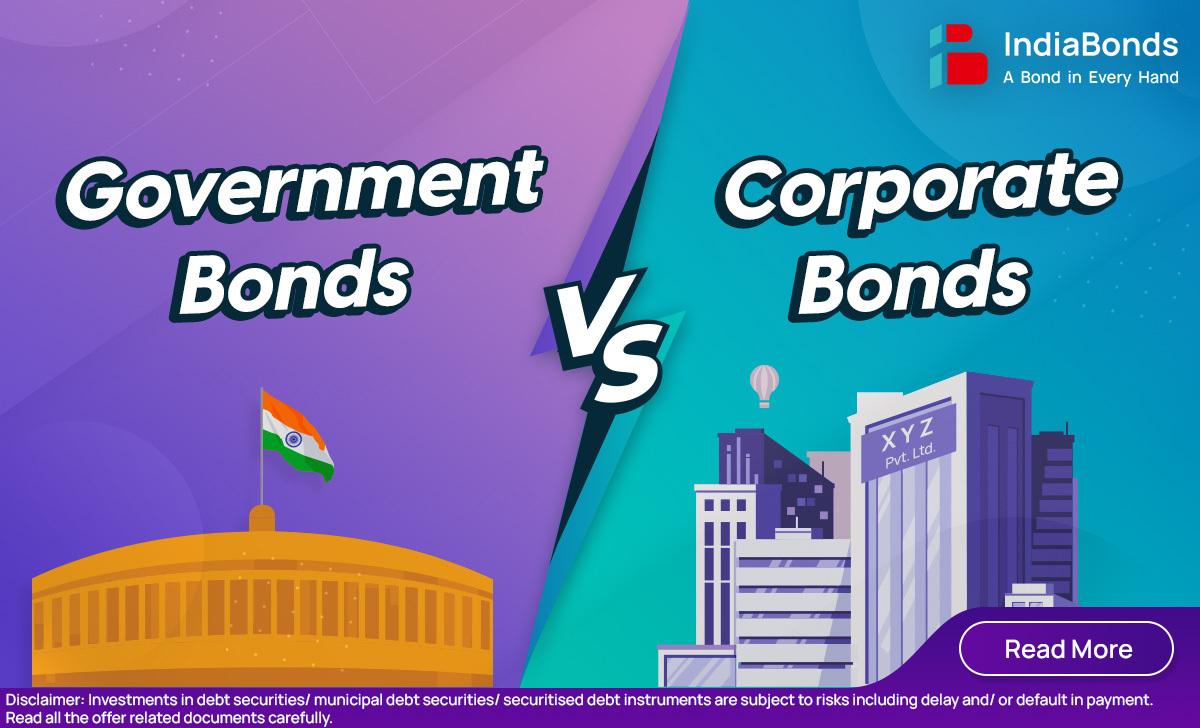Government Bonds vs. Corporate Bonds: Key Differences Every Investor Should Know

Investing in bonds is one of the most common ways to build a diversified portfolio, offering both safety and steady returns. However, not all bonds are the same. Among the different bond types available to investors, government bonds and corporate bonds are two of the most popular. Although they share some similarities, they come with distinct characteristics that can influence an investor’s decision-making process. Understanding the differences between government and corporate bonds is crucial for anyone looking to invest in these financial instruments.
What Are Government Bonds?
Government bonds are debt securities issued by national governments to finance public spending. These bonds represent a loan made by the investor to the government, with the promise of repayment at a future date along with interest. The main appeal of government bonds lies in their stability. Governments are seen as less likely to default on their debt compared to corporations, particularly those from economically stable countries. This makes government bonds relatively low-risk investments.
In terms of their characteristics, government bonds typically offer lower yields compared to other types of bonds because of their minimal risk. The interest rate, or coupon, paid on government bonds is determined at the time of issuance and remains fixed for the duration of the bond. These bonds can have varying maturities, from short-term bills to long-term bonds with 10-30 years until maturity. Examples of government bonds include U.S. Treasury Bonds, UK Gilts, and Japanese Government Bonds.
Because of their secure nature, government bonds are highly sought after, especially in times of economic uncertainty. Investors seeking a predictable income stream with minimal risk often look to government bonds as a haven for their capital. See here for more info.
What Are Corporate Bonds?
Corporate bonds, on the other hand, are issued by companies to raise capital for various purposes, such as funding expansion or paying off existing debt. When you purchase a corporate bond, you are effectively lending money to a corporation, and in return, the company agrees to pay you interest and repay the principal at maturity.
Corporate bonds differ from government bonds in that they carry a higher level of risk. Since they are issued by corporations, the likelihood of default is greater compared to government bonds. The risk involved in corporate bonds is influenced by the creditworthiness of the issuing company, which can range from stable, investment-grade firms to those with weaker financial standings, issuing high-yield (junk) bonds. The greater the risk of default, the higher the interest rate or yield that is offered to investors as compensation.
Key Differences Between Government and Corporate Bonds
The most significant differences between government and corporate bonds stem from their issuers and the associated risks. The first key distinction is the issuer type. Government bonds are issued by national governments, while corporate bonds are issued by companies. The credit risk attached to these bonds varies significantly based on the issuer. Governments, particularly those of economically stable countries, tend to offer low-risk bonds. In contrast, corporations may face financial difficulties that increase the likelihood of default, making corporate bonds riskier investments.
When it comes to risk and return, government bonds are seen as a safer bet, with investors receiving lower yields due to the reduced risk. Corporate bonds, in contrast, offer higher yields to compensate investors for the increased risk of default. A company’s financial health and its credit rating play a major role in determining the yield on its bonds. Generally, the more stable the company, the lower the yield. On the other hand, a company with a weaker financial position will offer higher yields in an attempt to attract investors.
Another difference lies in the tax treatment of the two bond types. Certain government bonds, such as municipal bonds in the U.S., may be exempt from federal taxes and sometimes even state taxes. Corporate bonds do not typically offer such tax advantages, and the interest earned on these bonds is subject to regular income tax.
Factors to Consider When Choosing Between Government and Corporate Bonds
When deciding whether to invest in government or corporate bonds, several factors should be taken into consideration. First and foremost is risk tolerance. Investors with a low tolerance for risk may prefer the stability of government bonds, while those who are more comfortable with risk might opt for the higher returns offered by corporate bonds. For investors seeking to balance risk and return, a mix of both bond types can provide a diversified investment strategy.
Investment goals are another important consideration. If the primary goal is to preserve capital and generate stable income, government bonds are likely to be a more suitable option. On the other hand, if the goal is to achieve higher yields and greater returns, corporate bonds may be a better fit.
Conclusion
The choice between government and corporate bonds ultimately depends on the investor’s risk tolerance, investment objectives, and market outlook. While government bonds offer stability and safety, they typically provide lower returns. Corporate bonds, in contrast, offer higher potential returns but come with greater risks. By understanding the key differences between these two types of bonds, investors can make more informed decisions that align with their financial goals.



